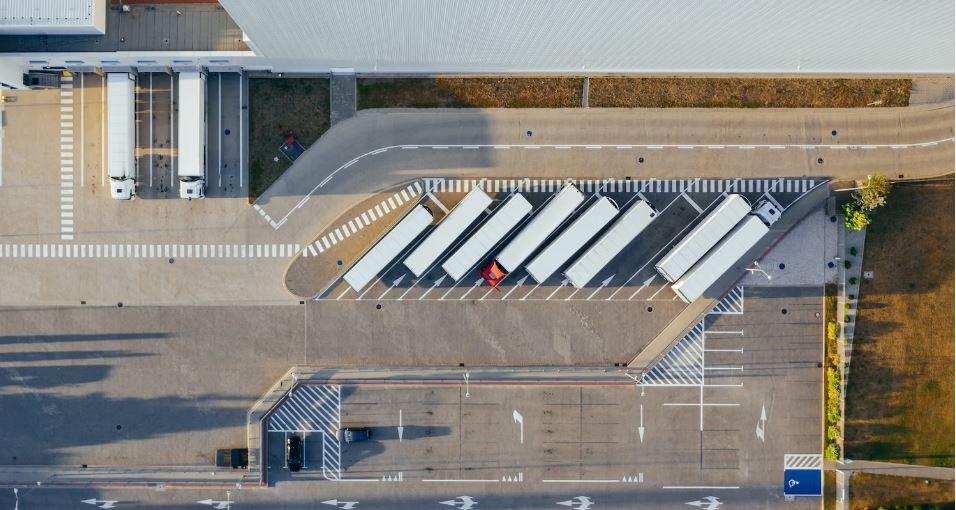Innovation plays a crucial role in material handling and transportation in increasing efficiency, reducing costs, and minimising environmental impact. The floor-to-floor transport system is one such innovation that has been changing the game in material handling.
This revolutionary technology has significantly improved how materials are transported, stored, and managed. In this blog post, we will explore the world of walking floor transport and how it reshapes the material handling industry.
Understanding Walking Floor Transport
Walking floor transport, a moving floor or self-unloading floor, is a dynamic and flexible solution for transporting bulk materials such as wood chips, biomass, solid waste, etc. Unlike traditional transport methods, which rely on gravity or manual unloading, the walking floor system uses hydraulics to move the cargo along the trailer’s floor.
The trailer’s floor comprises a series of individual slats or planks connected to hydraulic actuators. These actuators work synchronously to create a “wave” of motion along the floor, pushing the material forward. This controlled movement allows efficient unloading without needing external assistance or specialised equipment.
Benefits of Walking Floor Transport
- Versatility: One of the primary advantages of walking floor transport is its versatility. It can handle a wide range of bulk materials, including those that are difficult to transport using traditional methods. This versatility makes it a valuable asset in agriculture, construction, waste management, and more industries.
- Reduced Labor Costs: Traditional methods of unloading bulk materials often require manual labour or heavy machinery, which can be expensive. Walking floor transport eliminates additional labour, reducing operating costs significantly.
- Increased Efficiency: The synchronised movement of the floor ensures a constant and controlled flow of materials, allowing for faster unloading than traditional methods. This increased efficiency can lead to quicker turnaround times and improved customer satisfaction.
- Improved Safety: Walking floor systems enhance safety by reducing the need for workers to enter the trailer during unloading. This minimises the risk of accidents and injuries associated with manual unloading processes.
- Environmental Benefits: Walking floor transport can contribute to sustainability efforts by reducing the need for additional equipment, fuel consumption, and emissions. This eco-friendly approach aligns with the growing emphasis on environmentally responsible material handling practices.
Applications of Walking Floor Transport
Walking floor transport has found applications across various industries, transforming the way materials are handled and transported. Here are some key sectors where this technology is making a significant impact:
- Agriculture: Walking floor trailers are commonly used for transporting bulk agricultural products such as grain, animal feed, and silage. The ability to handle different types of crops efficiently has revolutionised the agricultural supply chain.
- Construction: The construction industry relies on walking floor transport to move construction materials like sand, gravel, and concrete. The system’s versatility and efficiency have streamlined construction processes.
- Waste Management: Municipalities and waste management companies use walking floor trailers to transport and unload solid waste, reducing the labour required for waste disposal and landfill operations.
- Recycling: Recycling facilities utilise walking floor transport to handle and transport recyclable materials, contributing to sustainable waste management practices.
- Energy and Biomass: Biomass energy plants benefit from walking floor transport to deliver wood chips, sawdust, and other biomass materials for energy production, reducing the environmental impact of energy generation.
- Food Industry: The food industry utilises walking floor transport for the safe and efficient movement of bulk food products, such as grains, flour, and sugar.
Innovations in Walking Floor Technology
The walking floor transport industry has not remained stagnant but has continuously evolved to meet the changing needs of various sectors. Recent innovations in walking floor technology have further expanded its capabilities and enhanced its efficiency. Here are some notable advancements:
- Remote Control and Automation: Many modern walking floor trailers come equipped with remote control systems, allowing operators to manage the unloading process from a safe distance. Automation features also enable precise control over the movement of materials.
- Telematics and Tracking: Advanced tracking systems and telematics allow for real-time monitoring of trailer and cargo conditions, enhancing logistics management and asset tracking.
- Lightweight Materials: Manufacturers have developed lightweight materials for the construction of walking floor trailers, reducing their overall weight and increasing payload capacity while maintaining structural integrity.
- Customisation Options: Trailer manufacturers offer customisation options to cater to specific industry needs. This includes adjustable slat configurations, trailer lengths, and additional safety features.
- Energy Efficiency: Some walking floor systems incorporate energy-efficient hydraulic technology and power management systems, reducing energy consumption and environmental impact.
Challenges and Considerations
While walking floor transport offers numerous benefits, it is essential to be aware of potential challenges and considerations when implementing this technology:
- Initial Investment: The cost of purchasing walking floor trailers and retrofitting existing trailers can be substantial. However, the long-term cost savings in labour and increased efficiency often outweigh the initial investment.
- Maintenance: Like any complex machinery, walking floor systems require regular maintenance to ensure smooth operation. Maintenance costs should be factored into the overall cost of ownership.
- Training: Operators and drivers may require training to operate walking floor trailers effectively and safely. Adequate training is crucial to maximise the system’s benefits.
- Payload Considerations: While walking floor trailers can handle a wide range of materials, it is essential to consider payload weight limits and legal regulations for transporting specific materials.
Final Thoughts
Walking floor transport has emerged as a game-changer in material handling, offering versatility, efficiency, and environmental benefits across various industries. With its ability to handle a wide range of bulk materials, reduce labour costs, improve safety, and enhance overall efficiency, walking floor transport has become an indispensable tool in modern logistics and material handling operations.
As technology continues to advance, we can expect further innovations in walking floor transport systems, making them even more adaptable and efficient. This technology’s ability to reduce environmental impact and increase sustainability aligns with the growing demand for eco-friendly material handling solutions, making it a driving force in the future of logistics and transportation. Whether in agriculture, construction, waste management, or any other sector, walking floor transport is here to stay, revolutionising the way we handle and transport materials.



